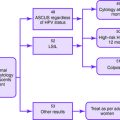Chapter 16 HEADACHE
The majority of patients with headache experience migraine, tension-type, or medication rebound headaches. Serious or anatomic causes of headaches are uncommon but have to be considered when a patient presents with a severe headache. Headaches, particularly migraines, occur more frequently in women and can be disabling.
In evaluating a patient with a headache, it is essential to rule out a serious cause of headache by assessing any ominous findings in the history and physical examination. These findings include neurologic symptoms or signs, older age at onset, systemic illness or symptoms (such as fever, cancer, pregnancy or postpartum status, and use of anticoagulants), sudden onset of headache, new type of headache, different or progressive headache, headache that awakens the patient from sleep, and occipital headache. Headaches that can have severe consequences if they remain undiagnosed include those associated with subarachnoid hemorrhage (sudden onset) and other intracranial bleeds, IIH, meningitis (associated with fever and neck rigidity) and other infections, brain neoplasm (which may be associated with seizures), and giant cell arteritis (associated with temporal artery tenderness, diminished temporal artery pulse, jaw claudication, polymyalgia rheumatica, and visual changes).
Causes of Headache
Giant cell arteritis (temporal arteritis)
Human immunodeficiency virus (HIV) infection
Hypercapnia caused by chronic obstructive lung disease
IIH (Idiopathic intracranial hypertension)
Polyarteritis nodosa (vasculitis)
Rheumatoid arthritis (vasculitis)
Systemic lupus erythematosus (vasculitis)
Key Historical Features
✓ Age when headaches first experienced
✓ Triggers (exercise, food, sex, coughing, cold liquids)
✓ Recent lumbar puncture/epidural injection
✓ Medical history, especially that of the following:
✓ Family history, especially of headaches
✓ Medications, including anticoagulants and pain medications
Key Physical Findings
✓ Vital signs, especially hypertension or fever
✓ General assessment of well-being and mental status
✓ Head and neck examination for evidence of ear infection; sinusitis; TMJ syndrome; neck stiffness; neck tenderness; or temporal artery tenderness, swelling, or erythema
✓ Funduscopic examination to evaluate for papilledema
✓ Neurologic examination (complete)
✓ Musculoskeletal examination for any muscle tenderness or trigger points
Suggested Work-Up
The American Academy of Neurology states that neuroimaging should be considered in patients with unexplained abnormal findings on the neurologic examination, but it also states that there is no clear evidence to recommend magnetic resonance imaging (MRI) or computed tomographic (CT) scanning as the initial examination.
Additional Work-Up
| Complete blood cell count | If infection or anemia is suspected |
| HIV test | If the patient is at risk for HIV infection |
| Lumbar puncture | If meningitis or subarachnoid hemorrhage is suspected |
| Blood culture | If meningitis is suspected |
| Measurement of erythrocyte sedimentation rate | If giant cell arteritis is suspected |
| Temporal artery biopsy | If giant cell arteritis is suspected |
| Thyroid-stimulating hormone (TSH) | If thyroid disease is suspected |
| Urine pregnancy test | If pregnancy is suspected |
| Urinalysis | To evaluate for proteinuria in a pregnant patient |
| Liver function tests and measurement of creatinine, uric acid, and lactate dehydrogenase | If preeclampsia is suspected |
| Measurement of prothrombin time, partial prothrombin time, and international normalized ratio (INR) | If preeclampsia or hemorrhage is suspected or a patient is taking an anticoagulant |
| Sinus radiography or CT scanning | If sinusitis is suspected |
Dodick DW. Clinical clues and clinical rules: primary vs secondary headache. Adv Stud Med. 2003;3:S550-S555.
Frishberg BM. The utility of neuroimaging in the evaluation of headache in patients with normal neurologic examinations. Neurology. 1994;44:1191-1197.
Johnson CJ. Headache in women. Prim Care. 2004;31:417-428.
Levin M. The many causes of headache: migraine, vascular, drug-induced, and more. Postgrad Medicine. 2002;112(6):67-68. 71-72, 75-76
Maizels M. The patient with daily headaches. Am Fam Physician. 2004;70:2299-2306.
Marcus DA. Focus on primary care: diagnosis and management of headache in women. Obstet Gynecol Surv. 1999;54:395-402.
Paulson GW. Headaches in women, including women who are pregnant. Am J Obstet Gynecol. 1995;173:1734-1741.
Silberstein SD. Practice parameter: evidence-based guidelines for migraine headache (an evidence-based review): report of the Quality Standards Subcommittee of the American Academy of Neurology. Neurology. 2000;55:754-762.




